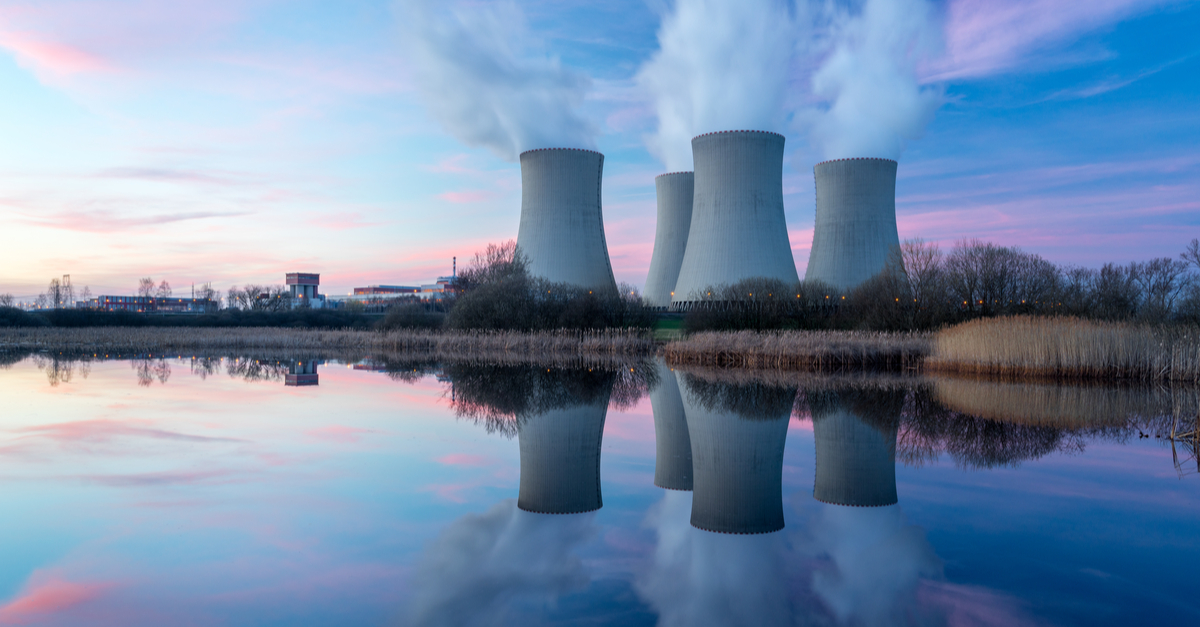On December 1st, Ontario Premier Doug Ford, New Brunswick Premier Blaine Higgs and Saskatchewan Premier Scott Moe signed a Memorandum of Understanding on the development of Small Modular Reactors.
Premier Ford said that the provinces “agreed to work together to explore new, cutting-edge technology in nuclear power generation to provide carbon-free, affordable, reliable and safe energy, while helping us unlock economic potential across Canada, including rural and remote regions” (Source).
The Premiers will direct their respective Energy Ministries to undertake the following:
(a) The three Energy Ministries will hold a meeting in the January 2020 – March 2020 timeframe (“Winter Meeting”) to discuss strategies that will best advance the development and deployment of SMRs, including engagement with the nuclear regulator, nuclear operators, supply chain companies, academic and research experts, technology vendors and the Federal Government.
(b) By Summer 2020, informed by the Winter Meeting, the three Energy Ministries in cooperation with the respective CEOs of OPG, Bruce Power, NB Power and SaskPower will prepare a feasibility report, including a business case for the development and deployment of SMRs in their jurisdictions.
(c) By Fall 2020, the three Energy Ministries will develop a strategic plan for deployment of SMRs, including market opportunities across Canada and globally, based on the outcomes of the Winter Meeting, and report back to their respective Premiers on next steps.
What are Small Modular Reactors (SMRs)?
SMRs are defined by the International Atomic Energy Agency (IAEA) as nuclear reactors that generate under 300 megawatts of electricity. Traditionally, nuclear reactors in Canada generate around 800 megawatts of electricity.
These reactors are considered modular since they are designed to work independently or as modules in a larger complex.
The benefits of SMR technology is its potential to provide emission free, affordable energy opportunities for a low-carbon future (Source). Also, SMRs require lower capital investment and so, are able to compete with other low-cost forms of electricity generation.
However, it is important to keep in mind that these SMRs haven’t been built yet. The World Nuclear Association has reported licensing costs as a potential challenge. The Canadian Nuclear Safety Commission has also noted that more research still has to be conducted in order to show that this technology is reliable and safe.
OSPE’s Position
OSPE agrees that SMRs can overcome several serious barriers to the traditional deployment of nuclear energy, such as large and the economic risks associated with on-site construction of large nuclear reactors.
OSPE is pleased that Ontario and other Premiers share a collective vision of developing this innovative technology across Canada.
OSPE has been calling on Canada’s federal government to develop a more comprehensive energy strategy that includes the development of SMRs. Previously, OSPE congratulated the Canadian Nuclear Association (CNA) for publishing the A Call to Action: A Canadian Roadmap for Small Modular Reactors, but also highlighted some concerns regarding the federal government’s approach.
Some of these concerns include:
- The limited supply of economically recoverable Uranium 235, the fissile isotope needed to start up SMRs. Canada’s current reserves will only last until 2050 at current world demand. Canada should have a development track for an SMR design that can breed more fissile isotopes than it consumes so our nuclear fuel supply will meet our economy-wide needs for centuries.
- The need to better address the fear of nuclear accidents. Canada should have a development track for an SMR design that is walk-away safe.
- The need to better address concerns about burying long-lived used fuel isotopes, such as transuranic isotopes. Canada should have a development track for an SMR design that can consume those transuranic isotopes as fuel, as well as a development track for more environmentally sustainable used fuel recycling.
- The need for an affordable low-emission source of heat for industry and buildings in large urban centers. Canada should have a development track to utilize walk-away safe SMRs and district heating systems near urban centers so that thermal energy from electricity production can be used economically for industrial heat, domestic hot water and building space heating.
- The need to meet emission targets in the 2050 timeframe to meet our international climate change mitigation commitments. SMR designs that have progressed the farthest through the research and development process and that address the long-term challenges listed above have the greatest chance of success.
OSPEs full Submission to the Canadian Nuclear Association
OSPE recognizes the industry’s desire to move ahead quickly with easy to commercialize SMR designs. Still, it is important that Canada develops a long-term strategy that addresses the challenges listed above.
Advanced SMRs that supply both electricity and heat to urban centers are a key factor to achieving our environmental goals by 2050. Developing these advanced SMRs and associated fuel recycling facilities by that timeframe requires beginning the development of technology and programs now.
OSPE is pleased that the Ontario Government is taking steps forward to develop the province’s innovative nuclear sector. Engineers hope that the provincial government will work in collaboration with the federal government to develop this important energy industry.





Leave a Comment